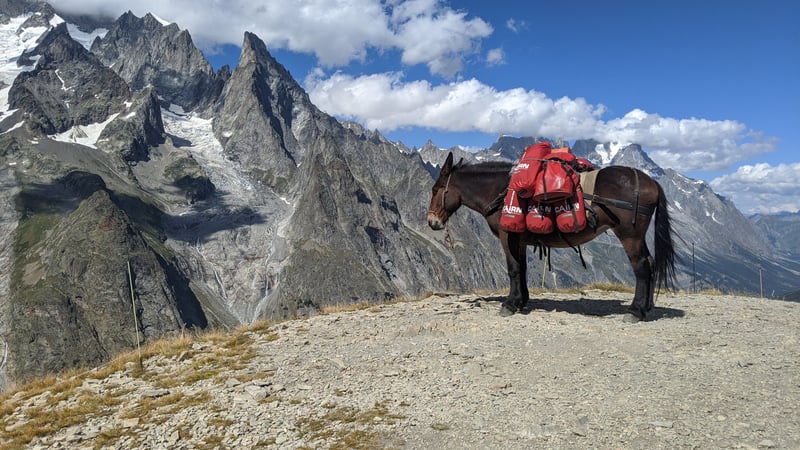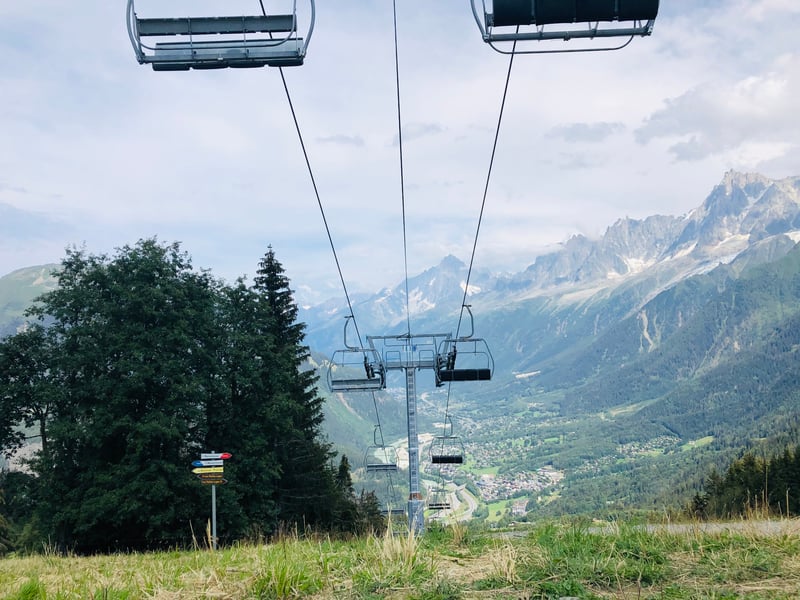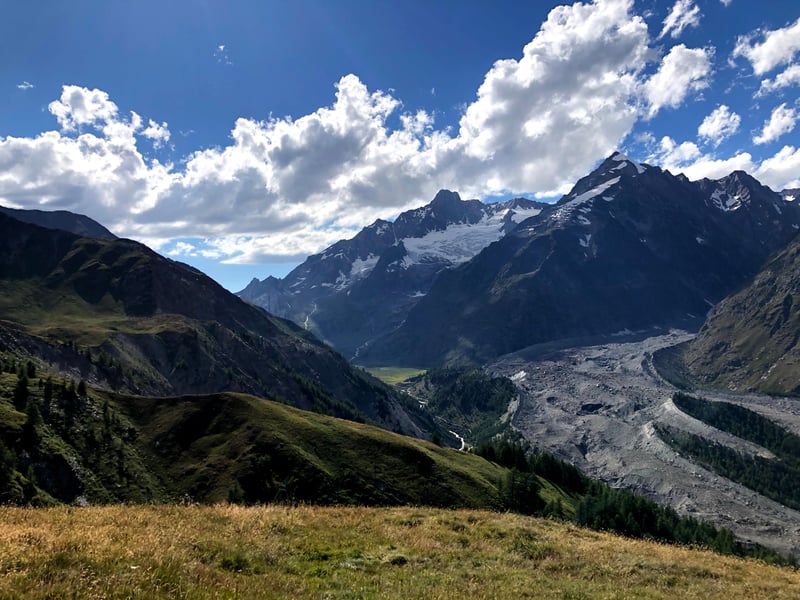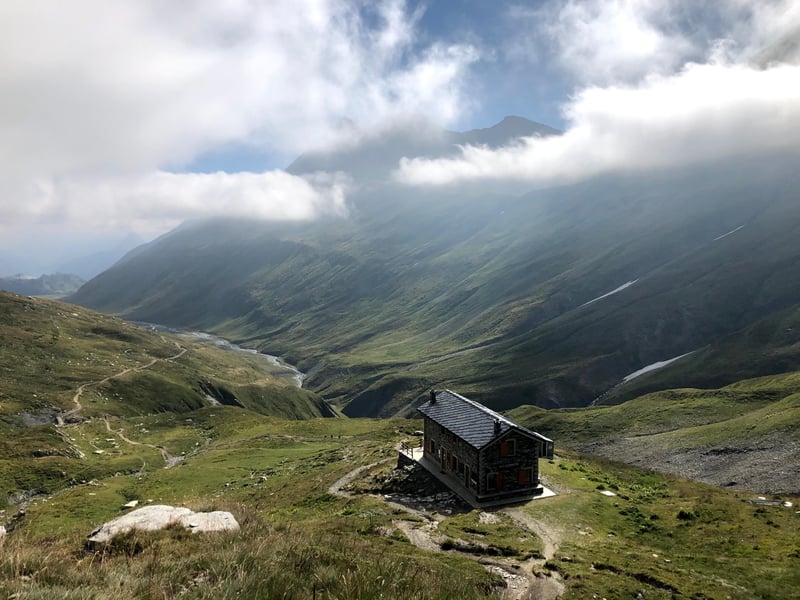Menu

First time I heard about it I researched and decided I wanted to walk it. The tour du Mont Blanc, or for short TMB, is a long distance hiking trail in the Alps. The trail runs around the Mont Blanc group, passing through three countries (France, Italy and Switzerland). Due to travel bans almost everywhere this year, a road trip to a hike seemed like a great plan for me.
About a year ago, when walking the Eifelsteig (a long distance trail in our area) I understood the similarities between operational scheduling and long-distance trail planning. For this reason, this time I was able to prepare the trip better. Let me explain this how this relates...
(More astonishing pictures included)
To share a little background you should know the Tour du Mont Blanc has a length of about 170 km (105.63 mi) with about 10,000 meters (6.21 mi) of altitude. The official trail’s website suggest sectioning the total distance into 7 to 10 phases.
Considering I hadn’t trained much, I opted for the 10 stage-circuit. I was devoted to completing one stage per day. So here's where hiking and scheduling connect.
With the 10 stages idea in mind, I “scheduled” my trail. All the terms I have learned and reviewed at work (e.g. from this ultimate guide to job shop scheduling) had a sense in my everyday life too.
The day I got the idea, I planned for the medium term. At that time, I knew in which month I would hike and how long it would take me. Once the day got closer, I went ahead into the details.
Like most planners, I wrote down all specifics on Excel. I noted the stage number and the date as if it was a calendar. In this sense, each stage was a task, and I treated the tour as one job.
The transportation to the start of the trail is basically the equivalent to the set up time. Each phase can be considered the run time, rest days are waiting time and this idea of finishing in 10 days was my due date.
For this case, the resource is me. The resource requirements are the previous hours of training and all equipment. Since there are no additional machine center or materials, the respective earliest start dates for each task is the moment I finish getting ready every morning. This, I must add, can be a though “restriction”:
Just like receiving raw material or product components, time relies on several factors. For me, this means, waking up as an internal factor or waiting for the heavy rain to pass as an external factor.
In my opinion, by looking at this trail through a scheduler’s eyes, I avoided uncalled problems. When first planning then scheduling, I made sure I had an alternative route in case something went wrong or take longer than expected. I anticipated uncertainties and came up with a list of quick fixes.
This is how I started to schedule my job and its 10 stages (tasks). If you are unsure how to get started with job shop scheduling, here is blog post that exactly helps you with this.
The one thing I learned is that a printed schedule created on Excel works for nothing when you can’t change it on the go. There’s no drag and drop function on a printed paper.
Why is that important? Because I kept looking at my schedule thinking “I should be there by now”, without having the possibility to update the dates, timing, the routes taken or the expenses. All of those modifications to the original plan were side notes on the back of the paper.
This was OK as I was the only resource, and I was just looking at this one job - without any further dependencies. However, I can imagine the mess that such a paper-based process creates when you have to juggle with many jobs, multiple resources and a hell of dependencies!
Needless to say, digital services can also improve wandering experiences for those who like to record and keep track of everything like I do. As of today, I’m still waiting for a scheduler, something like a Hiking Resource Planning Software to come to the market. Lucky for job shop planners, just plan it is out already.
Our software lets you do exactly that. You can reschedule your jobs and tasks as desired in a matter of seconds. And with our new production scheduling API, you are even capable of carrying along all the information directly from your ERP. It’s easy, isn’t it?
I'm still up for app recommendations if you have any. I'm also up for explaining better how just plan it can help you the most.
I wish this blog helps if you are thinking of starting a long distance trial. And maybe get you motivated to start wandering around. Hiking is by default a social distance measurement. On the short term, hiking promotes lower levels of stress, mood improvement and body strength, on the long term you can enjoy a long list of health benefits from weight loss, lower blood pressure, reduced risk for heart disease, among others.
Well, and if you do it like I did it, it also helps you better understand scheduling...




If you’re into hiking or have an interest in learning more about job shop scheduling, drop us a message via email at sales@just-plan-it.com. Alternatively you can also book your introductory demo from the button below.
Sincerely,
Paulina Soto
just plan it is a production scheduling software plus scheduling tools & best practices to help high-mix low-volume make-to-order manufacturers gain transparency and control over their shop operations. The software plus its methodology is used by thousands of people around the globe. They consistently achieve improved on-time deliveries, shorter lead times, and better utilization of their resources.
As just plan it is not just software, but a lot of processes and best practices, we recommend that you start with an exploratory meeting. If we agree that there is a fit between your requirements and our approach, we'll build a prototype for you.
Hence, it all starts with a meeting. Book that meeting now.
These Stories on Scheduling Best Practices
Made with by BOYUM IT SOLUTIONS GmbH (Copyright © 2024) Read our Privacy Policy & Terms of Service
No Comments Yet
Let us know what you think